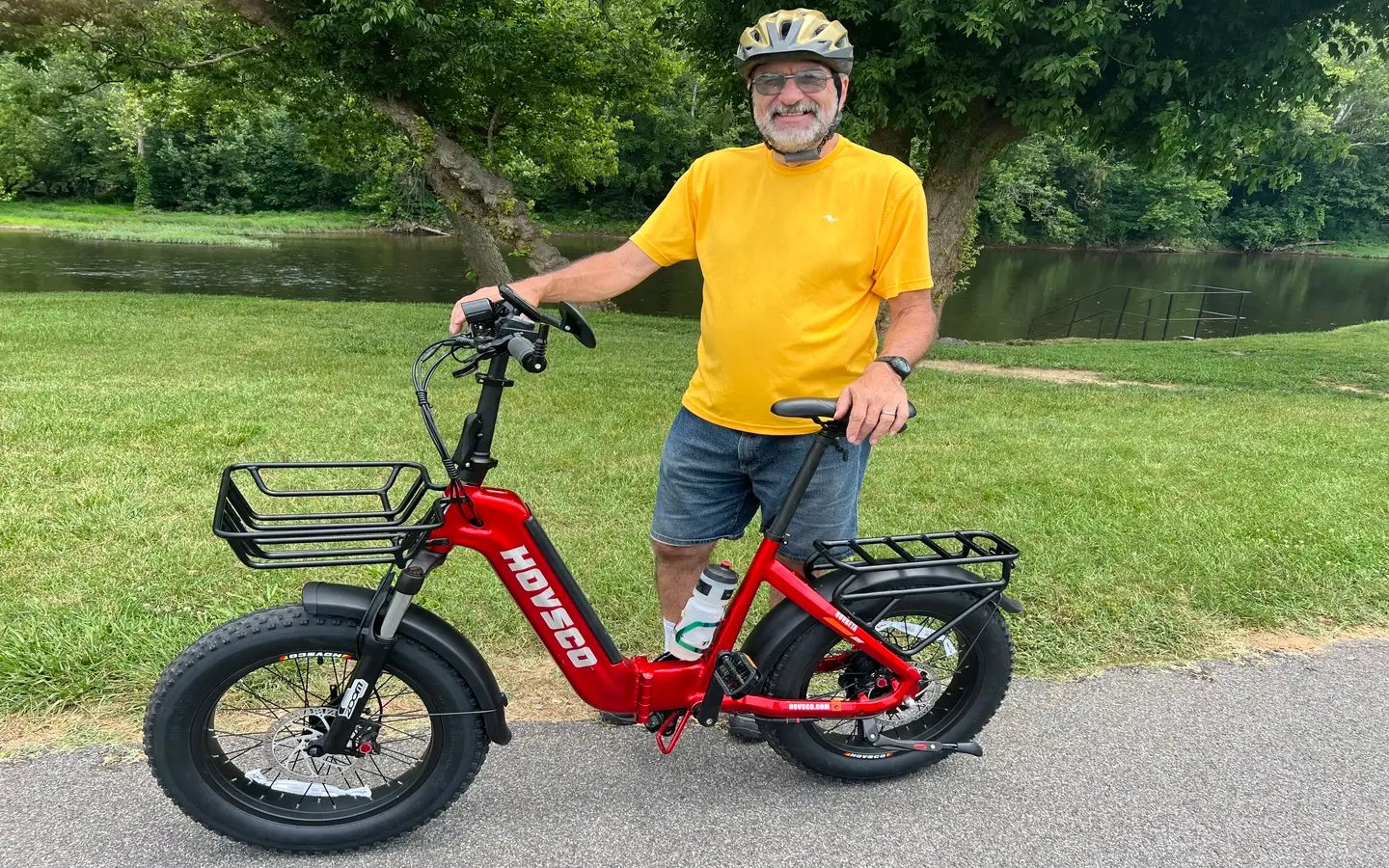
- by HOVSCO USA
How Can Electric Bikes Replace Cars in Daily Life?
- by HOVSCO USA
Electric bikes can replace cars for many daily trips, especially in urban environments. E-bike use offers lower costs, reduced emissions, easier parking, and improved health compared to car use. While electric bikes may not fully replace cars for every journey, they are a practical alternative for short- and medium-distance commutes, errands, and city travel. How Do Fat Tire E-Bikes Handle Cargo?
Electric bikes can replace cars for many trips thanks to several clear advantages. E-bike use produces far fewer emissions, costs less to operate, and avoids traffic congestion. Electric bikes allow riders to park easily, exercise regularly, and enjoy greater flexibility in dense urban areas. For many, e-bike use means a healthier, more sustainable lifestyle.
Chart: Comparing Electric Bikes and Cars
| Feature | Electric Bikes | Cars |
|---|---|---|
| Emissions | Near zero | High |
| Operating cost | Very low | High |
| Parking | Easy, flexible | Often difficult |
| Health benefit | Moderate exercise | None |
| Traffic | Avoids congestion | Stuck in jams |
| Range | 20–60 miles typical | 300+ miles |
| Weather comfort | Exposed | Protected |
| Cargo capacity | Limited | Large |
E-bike use can replace cars for many trips and save thousands each year. The cost of charging, maintenance, and insurance for electric bikes is minimal compared to cars. Riders avoid fuel expenses, parking fees, and costly repairs. Over time, these savings add up, making e-bike use a smart financial move for many urban dwellers.
Electric bikes can replace cars for short- and medium-distance trips, typically up to 20–30 miles per charge. E-bike use is ideal for commuting, grocery runs, school drop-offs, and errands within city limits. For longer journeys, poor weather, or heavy cargo, cars may still be necessary, but e-bike use can significantly reduce car dependency.
Despite their benefits, electric bikes cannot replace cars in every scenario. E-bike use is limited by battery range, exposure to weather, and cargo or passenger capacity. Hilly terrain and lack of cycling infrastructure can also be barriers. For families, long-distance travel, or frequent heavy hauling, cars remain essential, but e-bike use can still replace many routine trips.
E-bike use produces a fraction of the emissions generated by cars. Electric bikes use minimal electricity, often sourced from renewable energy, and emit no tailpipe pollution. This shift dramatically reduces air and noise pollution in cities. By replacing car trips with e-bike use, individuals can make a significant positive impact on the environment.
Chart: Emissions Comparison (per 1,000 miles)
| Mode | CO2 Emissions (lbs) |
|---|---|
| Electric Bike | 15 |
| Electric Car | 209 |
| Gas Car | 787 |
When considering e-bike use to replace cars, look for models with robust motors, long battery life, and cargo capabilities. Some electric bikes, such as cargo e-bikes and folding models, are designed for urban commuting, family transport, or carrying groceries. HOVSCO offers a range of electric bikes tailored for commuting, trail exploring, and daily errands, making e-bike use a practical car alternative.
E-bike use can only replace cars effectively where safe cycling infrastructure exists. Dedicated bike lanes, secure parking, and charging stations are essential for widespread adoption. Cities investing in these features see higher rates of e-bike use and greater reductions in car traffic. Without infrastructure, the potential for electric bikes to replace cars is limited.
Replacing a car with e-bike use requires planning and flexibility. Riders must adapt to carrying less, dressing for the weather, and sometimes combining e-bike use with public transit. For many, the benefits-cost savings, health, and reduced stress-outweigh the adjustments. HOVSCO recommends starting with a few weekly trips and gradually increasing e-bike use as comfort grows.
If you want to replace car trips with electric bike use, prioritize models with long battery range, reliable brakes, and cargo options. Invest in weather-appropriate clothing, high-quality locks, and lights for safety. HOVSCO’s e-bike lineup is designed for urban and suburban commuting, offering durability, comfort, and innovative features to support your transition from car to e-bike use. Consider your typical trip distances, local infrastructure, and storage needs before purchasing.
“At HOVSCO, we see electric bikes as a transformative solution for modern mobility. E-bike use can replace cars for countless daily trips, offering freedom from traffic, lower costs, and a healthier lifestyle. Our team is committed to designing electric bikes that empower riders to reimagine their daily journeys and reduce their environmental impact.”
Can electric bikes really replace cars for daily commuting?
Yes, e-bike use can replace cars for most daily commutes, especially in cities with good cycling infrastructure.
How much money can I save by switching to an electric bike?
Switching to e-bike use can save thousands per year by reducing fuel, maintenance, and parking costs.
Are electric bikes suitable for families?
Cargo electric bikes and models with child seats can support family transport for school runs and errands.
What are the main barriers to replacing cars with electric bikes?
Range, weather, cargo limits, and lack of infrastructure are the main challenges to widespread e-bike use.
How do electric bikes help the environment?
E-bike use drastically reduces emissions and noise pollution compared to cars, making cities cleaner and quieter.
Share:
Which Is Better: Step-Through or Step-Over Bikes?
What Are the 9 Important Benefits of Electric Bikes?